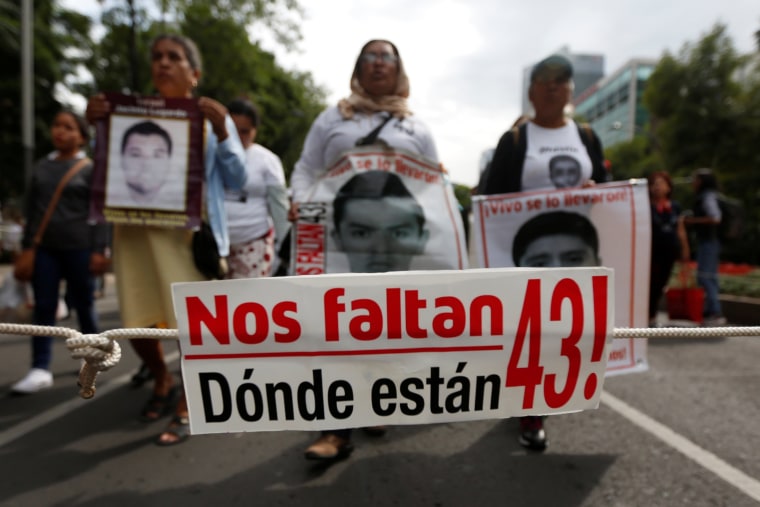International human rights officials investigating the disappearance of 43 Mexican students were targeted through spyware software, according to a report released Monday.
The Toronto-based Citizen Lab reported that members of the Interdisciplinary Group of Independent Experts, (GIEI) were targeted through cell phone text messages last March as they were close to publishing a report on their findings.
Jose Eguiguren Praeli, the president of Inter-American Commission on Human Rights, said the revelations were "extremely worrying," according to the Associated Press.
The text messages were designed to trick the recipient into clicking an attached link to a URL. If clicked, it would infect the phone with a malware named Pegasus, created by the Israeli-based NSO group. The malware, which is sold to government agencies, would give access to the recipient's phone microphone and camera and provide geolocation, emails, addresses and more.

The GIEI is a group of investigators from multiple countries that were appointed by the Inter-American Commission on Human Rights to investigate what might have happened to the 43 Mexican students that went missing almost three years ago.
The independent experts had criticized the Mexican government's investigation of the case of the missing students and had disagreed with some of the Mexican authorities' initial findings.
The Mexican government did buy the software, though it is not clear who used it. Mexico's president Enrique Peña Nieto said it has not been misused and promised an investigation into the case.
According to Citizen Lab, 19 individuals in Mexico have been targeted by the NSO spyware. The list of targeted people include prominent journalists, lawyers, anti-corruption activists and government officials.
Shannon O’Neill, a Senior Fellow for Latin American Studies at the Council on Foreign Relations, tells NBC News that Mexico has a long history of spying on political opponents and activists. If the recent allegations are true, then it would indicate a continuation of old-style politics in Mexico.
“What this suggests is that the Mexican Government, in particular the PRI [Institutional Revolutionary Party] political party, haven’t given up these old, nefarious and at times illegal tactics,” said O’Neil.
A group of nearly 100 students from the Ayotzinapa Teacher’s College were ambushed by local police on September 26, 2014 leaving six dead and 43 missing. This sparked massive protests across the Americas and calls for the Mexican Government to investigate what happened.
After an initial probe, Mexican authorities stated they had evidence that the students were killed and that their bodies were incinerated at a dump and then tossed into a river.
But only one student's remains have been identified, with a partial DNA match on another.
O’Neill said the relationship between the Mexican Government and the International investigators was tense throughout the investigation. O’Neill says the Mexican Government questioned the role of the international investigators since the beginning and disagreed strongly with the results of their results.
“The Mexican Government had a theory that they were all burned in a particular place and the reports of the international investigators did not find that plausible given the physics of it; the temperature that it would have caused, what would have happened to the environment at that place if you had a fire of that size,” said O’Neil.
Moving forward, said O'Neil, there needs to be a truly independent investigation of how these tools were used and if there was an abuse of power.